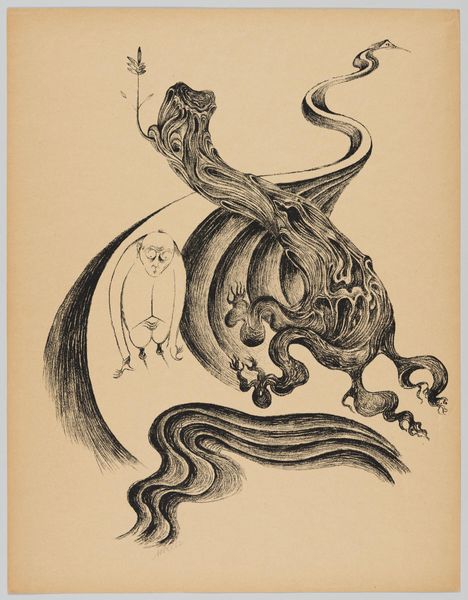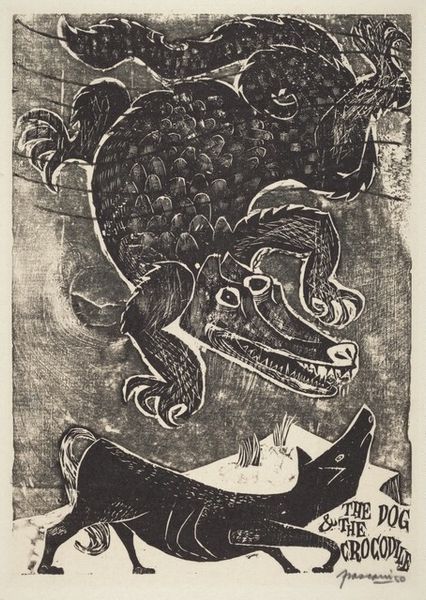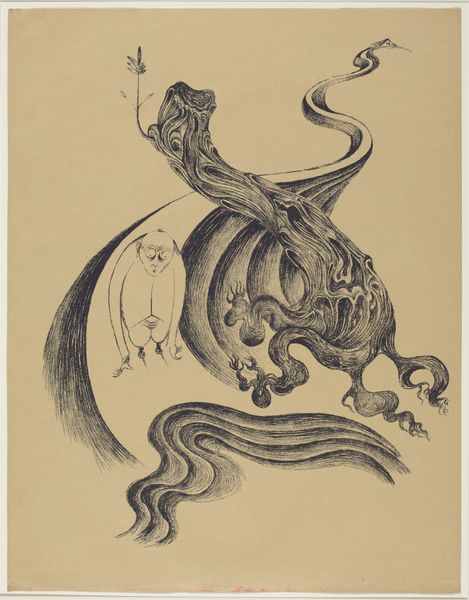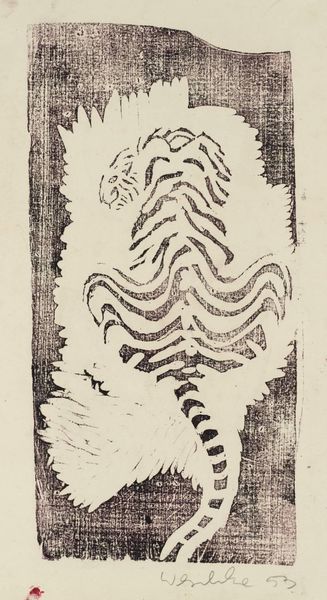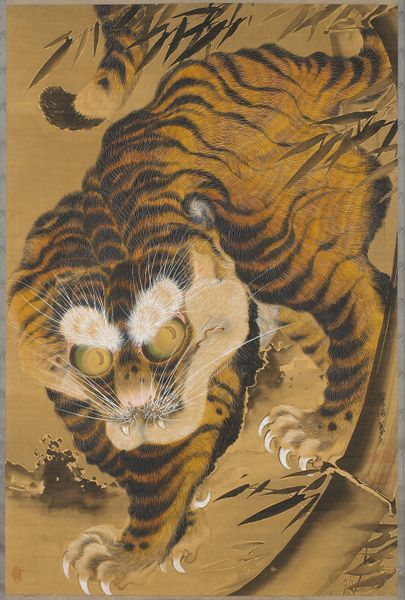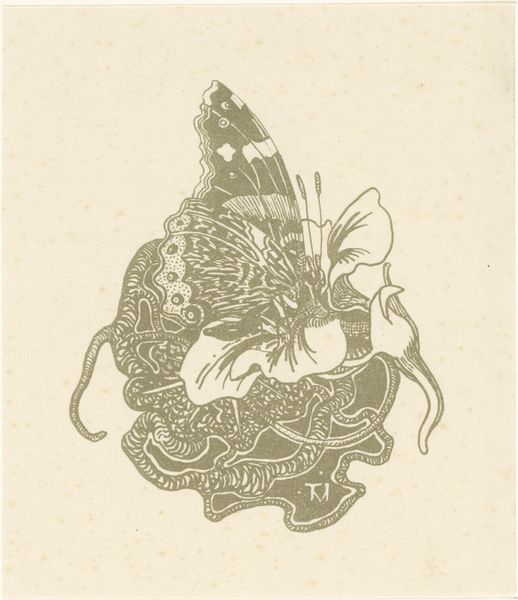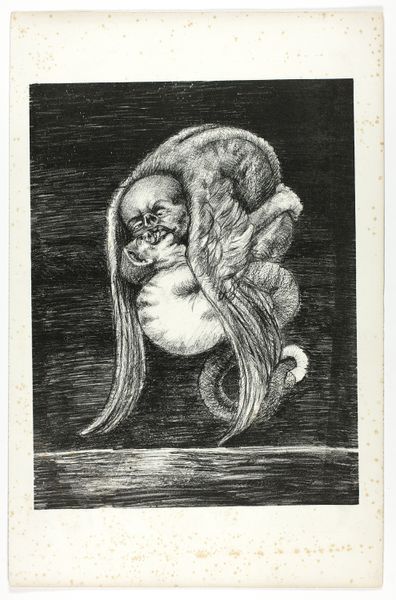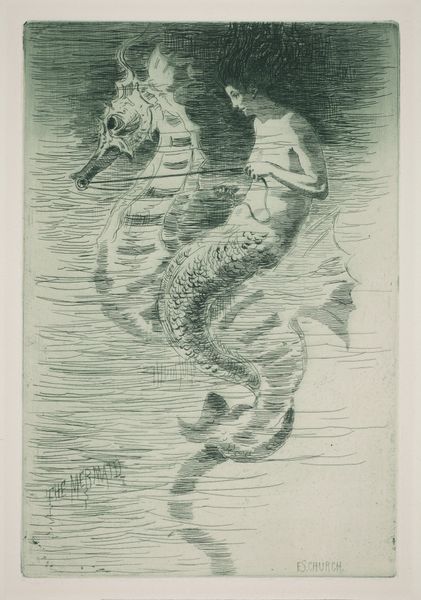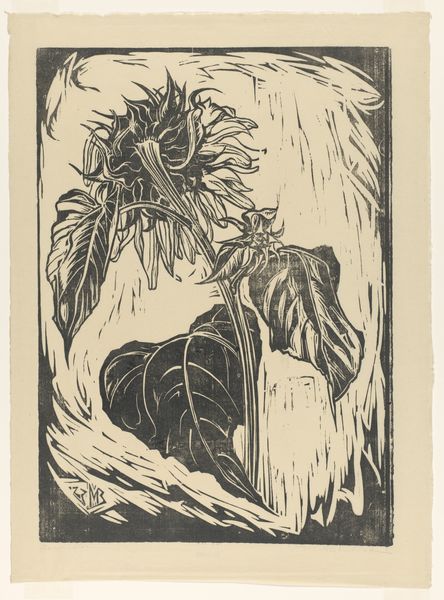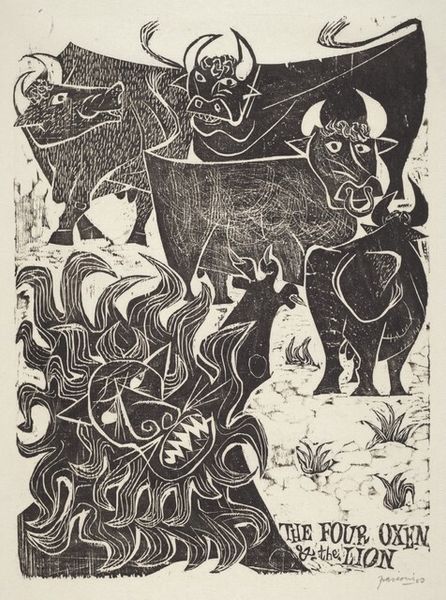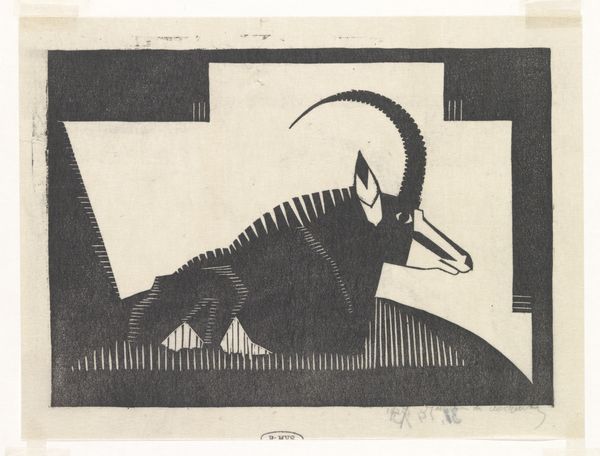
print, woodblock-print
# print
#
asian-art
#
figuration
#
woodblock-print
#
line
Dimensions: 23 11/16 x 14 7/8 in. (60.2 x 37.8 cm) (image)28 3/4 x 19 3/4 in. (73 x 50.2 cm) (mat)
Copyright: Public Domain
Editor: This print, "Talismanic Picture of Tigers and Magpies," dates to around the 20th century and it's on display here at the Minneapolis Institute of Art. The striking lines create a rather imposing tiger... How do we start interpreting the symbols, starting from a material perspective? Curator: This piece really exemplifies the blurring of high art and craft, doesn't it? Consider the woodblock print medium itself. What was the typical social status and function of those producing such prints? Were they considered "artists" in the traditional sense, or artisans working within a specific economic system of production and consumption? Editor: That's interesting. I hadn't really thought about the position of the artisan here. The very fact that this is a *print* suggests a potential for mass production and a wider audience, doesn't it? Unlike, say, a unique painting commissioned by the elite. Curator: Precisely! Who was the intended audience, and what was their relationship to the imagery? The tiger motif itself carries potent symbolism, acting not just as aesthetic subject, but imbued with spiritual significance through folk beliefs and shamanistic practices. Were these prints designed for purely decorative purposes, or did they hold talismanic value for the owner and their social environment? How was this imagery consumed? Editor: So the *process* of creating these images – the woodblock printing itself – and the context in which it's made are inextricably tied to the function and meaning? Also I never considered the magpie, now I see they come in a pair. Curator: Absolutely. Analyzing the material and method of production forces us to consider how these images functioned within a specific socio-economic landscape. The materials and labor involved were integral to shaping its message. We learn how economic forces shape what is sacred. Editor: I’m really appreciating how your perspective illuminates that connection. I'm now understanding the depth beyond the aesthetic appeal. Curator: Examining art through its means of production and social role can reshape how we value these types of "folk arts."
Comments
No comments
Be the first to comment and join the conversation on the ultimate creative platform.
